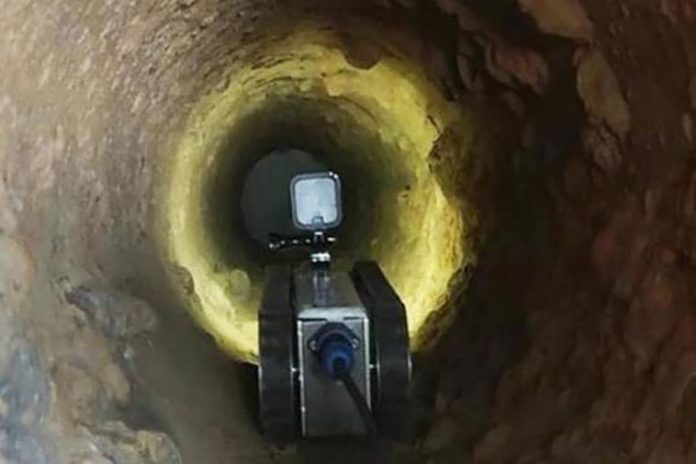The water transporting pipes more often suffer low maintenance and neglect, resulting in leakages. And these frequently remain unnoticed unless the water reaches the surface. For this reason, at regular intervals, the water pipelines are dug up. This may bring the leakage to notice. But this process is often very expensive and also there are chances you miss the leakage spot. Water is also lost through connections that have not been sanctioned officially.
Addressing the same problem, the researchers at IIT Madras have developed a robot to inspect pipelines for leaks and other faults. The robot called “Endobot” is going to be launched by the research-based startup, Solinas Integrity company IIT Madras.
Endobot can be a low-cost solution to identify the faults and hidden connections. The robot looks like a small tank and is electrically powered which runs within the pipe on four wheels connected using a conveyor belt. Endobot is connected to the entry point outside the pipe, which allows it to run over rough terrain within the pipe without obstructing. The water pipes usually have an inner diameter of at least 15inches, so the Endobot is designed about 6 inches high and can study any pipe having a diameter more than 8 inches.
“While the electrically operated robot is running through the pipes at about 15 cm per second, it captures video and transmits a live feed to the base at the point of entry. It also uses laser-based techniques to inspect the tubes as they move,” explains Vishwa Sai Prathyusha, the company’s chief technology officer and Alumna of IIT Madras.
These feeds are then sent to the user’s computer and can later be analyzed with software developed by the team.
“Of course, the robot has noteworthy features, but also the software and tools for analysis developed by our team give us a major advantage over the competition,” adds Ms. Prathyusha.
Every technology goes through the development stages, and Endobot is not an exception. The team is also planning to add more sensors like ultrasonic and electromagnetic sensors. This may help the robot to find whether the pipes develop corrosion or cracks on the outer side.
“As of now, not many people are working on such small robots,” says Prof. Rajagopal. He acknowledges, however, that there is competition at an international level. “Having small robots is a novelty even there, and open source electronics is driving this here,” he adds. So while such robots may not be out of reach of international companies, they still have not focused on such solutions. “Recently, the Indian government and corporations and municipalities are increasingly looking at outsourcing operation and management of water resources to private players, and we are in a sort of Goldilocks zone,” says Prof. Rajagopal.
The Endobot has already been tested within IIT Madras campus, where many pipes and installations are nearly 40 years old. And now the team is talking to the various urban corporations to allow them to try out the robot, as per The Hindu report.
